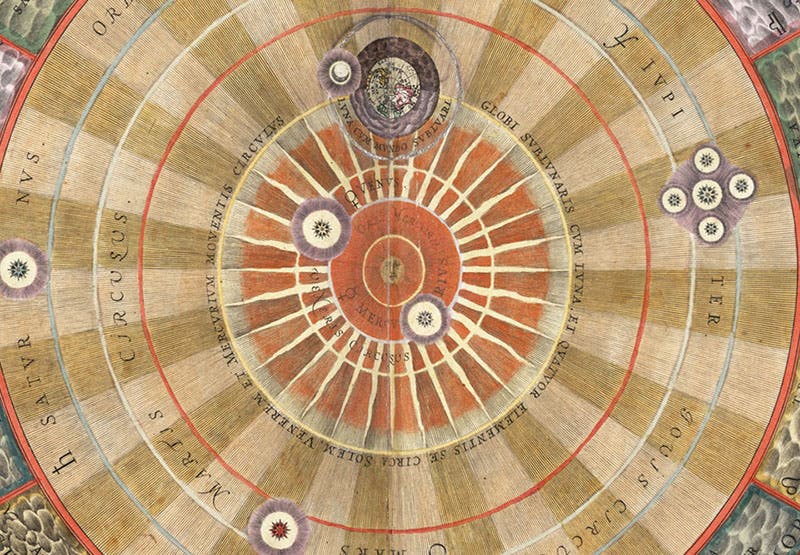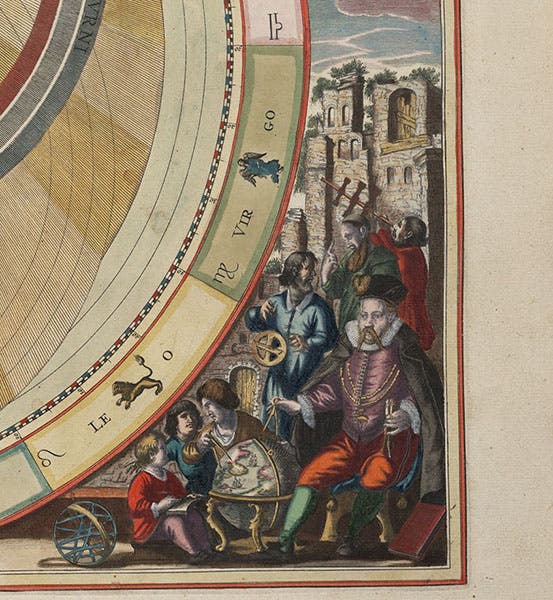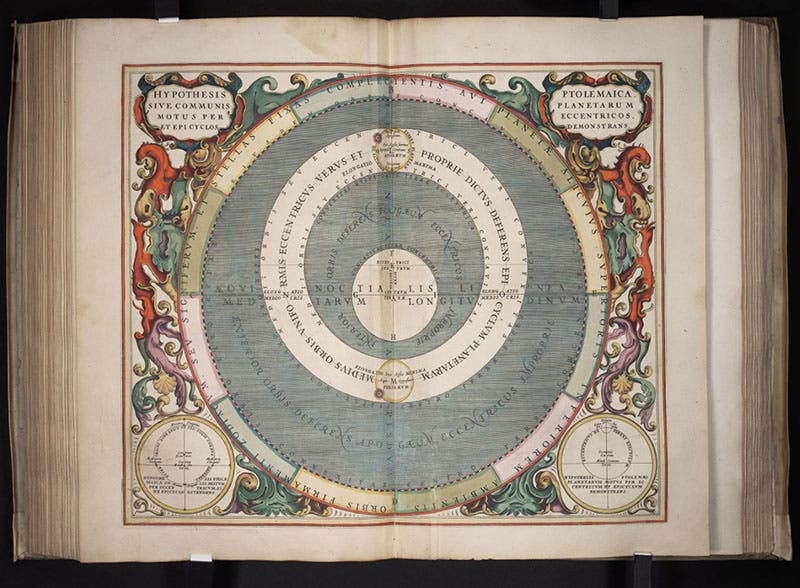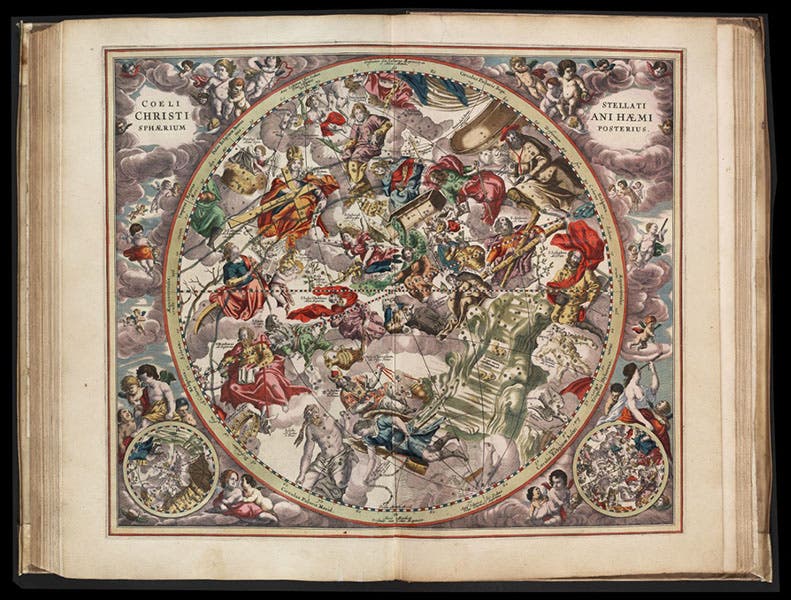Scientist of the Day - Andreas Cellarius
Andreas Cellarius, a German/Dutch schoolmaster and cartographer, was born around 1596 and died in 1665; there are no dates attached to his life, so his work could be celebrated on any day one chooses. We choose today, because, well, it is about time. Considering that he was the author of one of the most sumptuous books of the 17th century, we know surprisingly little about Cellarius. He was born in a town near Worms, Germany, worked as a schoolteacher in Amsterdam, and then in 1637, he became rector of a school in Hoorn, north of Amsterdam, a position he would hold for the rest of his life. He wrote and published a book on military architcture in 1645, and another, a history of Poland, published in 1659. We have neither of those works in our collections. Both books were published by the Jansonius Press in Amsterdam. Jansonius also published atlases, and perhaps it was Johannes Jansonius who suggested to Cellarius that he compile an atlas of celestial maps and diagrams. The only thing we know for sure is that such a book appeared, under Cellarius's name and the Jansonius imprint, with the titile: Harmonia macrocosmica. It is a grand title, The Harmonies of the Macrocosm, but then, it is a grand book, one of the grandest you are ever likely to see, if you are fortunate enough to view an actual copy. It is always said that the book was published in 1660 and reissued in 1661; that may be true, but I have never seen a 1660 edition, and Worldcat does not locate one anywhere. Our copy carries a 1661 imprint.
The Harmonia macrocosmica contains a considerable amount of Latin text, but I don't know anyone who has read any of it, and no one ever talks about the text. Instead, it is the 29 double-page, hand-colored engravings that grab everyone's attention, along with the engraved title page. Most of the engravings are cosmological or astronomical diagrams. There is an engraving, for example, of the earth-centered cosmology advocated by the ancient Greek astronomer Ptolemy of Alexandria (first image). There are similar diagrams of the other two cosmologies prevalent in Cellarius's day: the heliocentric system of Copernicus, and the compromise system of Tycho Brahe, with the planets orbiting the Sun and the Sun circling a stationary Earth. You can see these two engravings at our posts on Copernicus (where one is the first image), and Tycho Brahe (where the other is the last image). For today, we show a detail of the center of the Copernican plate (second image), and the bottom corner of the Tychonic plate, with a portrait of Tycho (third image).
These three cosmological plates are often reproduced, and I would not be surprised if one or more are familiar to you. But there are many others attractive diagrams in the book, some of which I have never seen reproduced in the secondary literature. For example, we include an engraving depicting a world system known in Cellarius's time as the Aratean cosmology, because it first appeared in a medieval manuscript of the ancient Greek astronomical poet, Aratus (3rd c BC) (fourth image, below).
The engraving shows Mercury and Venus orbiting the Sun, explaining why Mercury and Venus are always seen near the Sun, and as such is a precursor to both the Copernican and Tychonic systems. Cellarius's engraving is a copy of a diagram in a manuscript owned by Hugo Grotius and now in the university library at Leiden.
Another unusual plate shows a section of a solid planetary sphere, depicting the eccentric path needed for the planets to travel through, in order to physically reproduce the epicycle-deferent system of Ptolemy (fifth image, above). Such solid-sphere diagrams began to appear in print with Georg Peurbach’s New Theory of the Planets in the 15th century. But Cellarius’s diagram is not a copy of any particular printed diagram that I am familiar with.
The engravings at the end of the Harmonia macrocosmica are maps – star maps. Two maps show the classical northern and southern constellations, and with their hand-coloring, they are quite beautiful; we show the northern hemisphere (sixth image, above). But there are two other star maps, on which the pagan constellations are replaced by a completely new set of Christian constellations, first proposed by Julius Schiller in 1627.
Schiller’s atlas was not colored – at least, our copy was not – so it is quite a treat in Cellarius’s volume to see the twelve apostles and Mary and other Biblical figures decked out in sumptuous colored robes, and to see such unusual celestial features as St. Peter’s boat and Noah’s Ark. For some reason the Christian heavens are not divided up by north and south, but by east and west; we show the second Christian map (seventh image, above) and a detail from that map of “The Parting of the Red Sea,” which replaced the classical constellation Eridanus (eighth image, below). You can see Cellarius’s map of the southern classical constellations at our post on Frederick de Houtman (first and fourth images at the link), and the engraved title page at our entry on Philippe van Lansberge (last image at the link).
There is a lot we do not know about the Harmonia macrocosmica of Andreas Cellarius. There is no portrait of Cellarius. We don’t know where he got his information. We don’t know who drew the plates. We do know the engraver for ten of the plates and the engraved titlepage, but nothing more. It is truly a mystery book, by a mystery author. But it is good for beautiful objects to be mysterious.
Dr. William B. Ashworth, Jr., Consultant for the History of Science, Linda Hall Library and Associate Professor emeritus, Department of History, University of Missouri-Kansas City. Comments or corrections are welcome; please direct to ashworthw@umkc.edu.













